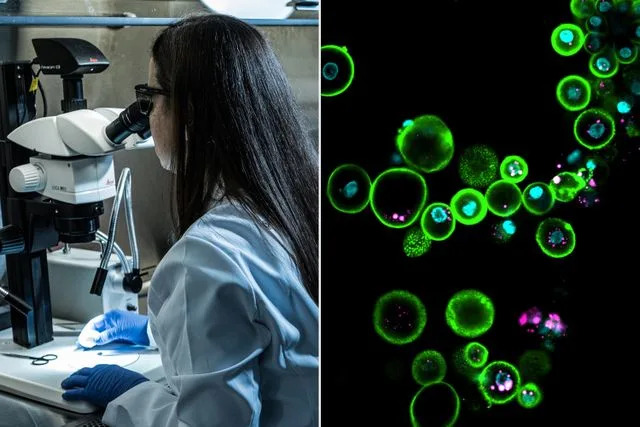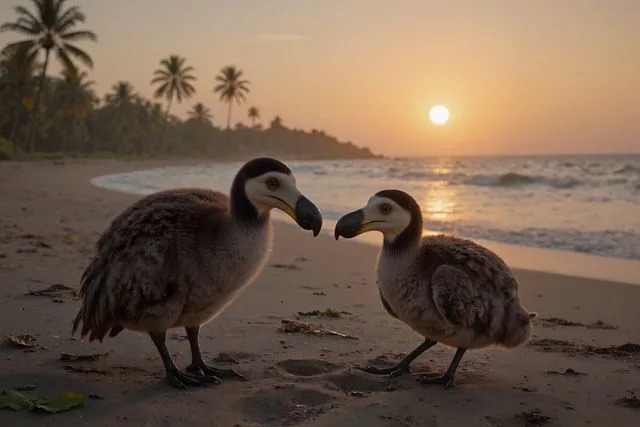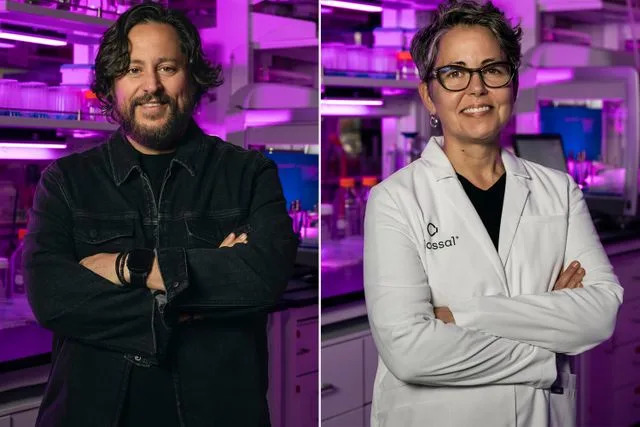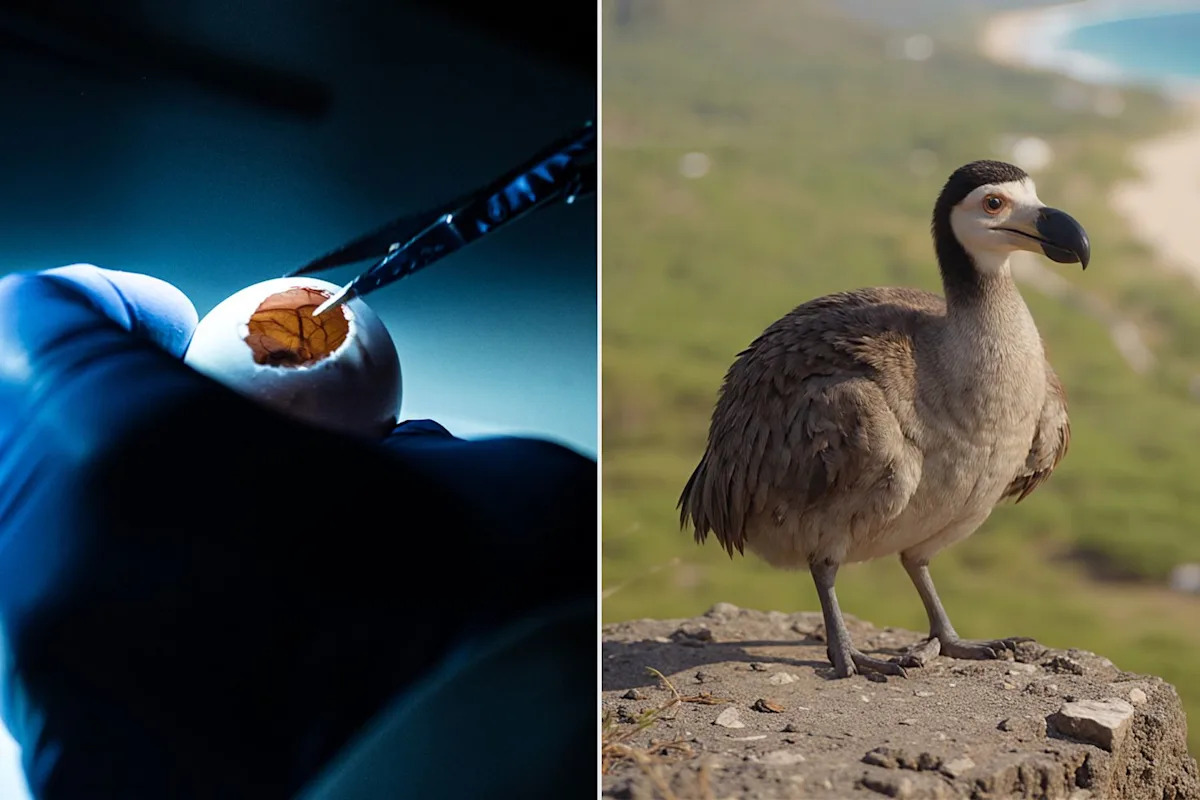NEED TO KNOW
Colossal Biosciences says it achieved the first pigeon PGC culture, unlocking a clearer path to dodo de-extinction
Colossal’s CEO Ben Lamm says dodos could return within five to seven years
While working on dodos, the company is also caring for its three revived dire wolves
Colossal Biosciences says it has taken a large leap forward in bringing the extinct dodo bird back to life.
On Wednesday, Sept. 17, the bioengineering company announced a scientific breakthrough in which its team successfully cultured pigeon primordial germ cells (or PGCs), the reproductive precursors necessary for reviving the extinct bird.
It’s the first time in history that PGC culture has been achieved beyond chickens and geese — an advancement for avian science and for the de-extinction science for which Colossal Bioscenes has become known.
Colossal CEO and co-founder Ben Lamm and the company’s chief science officer, Dr. Beth Shapiro, spoke to PEOPLE about what this development means for the project.
“Only three bird species have ever had [PGC culture conditions], and now pigeons,” explained Lamm. “It’s very, very hard to do, and we did this in 18 months, so this was a very, very big step. This was a huge technology unlock for the dodo,” Lamm says of culturing pigeon PGCs.
This milestone, Lamm adds, allows the company to answer one of the questions it gets most often: When will the dodo return?

Colossal Biosciences
Colossal Pigeon Primordial Germ Cells
“We couldn’t tell people [if] dodos are going to take 20 years to bring back or 30 years to bring back until we got to this PGC,” says Lamm. “Now that we’ve got to PGCs, we are confident that in the next five to seven years we can see a dodo, but hopefully that’ll go even faster once we get into the editing.”
The announcement comes alongside another milestone for Colossal, with an additional $120 million in funding, bringing its total raised to $555 million and its valuation to more than $10 billion. With the added resources, the company is expanding its Avian Genetics Group, investing in further genome sequencing and building out conservation programs that extend beyond the dodo.
On Mauritius, the bird’s original home, Colossal has formed the Mauritius Dodo Advisory Committee (MDAC), a group of cultural and scientific leaders tasked with guiding conservation and eventual rewilding efforts.
“This journey is more than reviving a lost species — it is about honoring our island’s unique heritage,” said Devina Lobine, Ph.D., a research officer of the Mauritius Institute of Biotechnology and a chair of the MDAC.
As the dodo makes headlines, Colossal’s dire wolf project, which the company debuted in April, continues to grow. Three wolves — Romulus, Remus, and Khaleesi — now roam a secure 2,000-acre preserve together. The animals have transitioned from being hand-fed to exhibiting natural pack behaviors, including hunting on their own, with Remus taking on a more Alpha role amongst them.
“They’re behaving more and more like wolves, less like animals raised by humans,” Lamm says.
Though the current pack will remain in managed care, he notes that future generations could eventually be reintroduced onto larger preserves. For a species that disappeared thousands of years ago, watching instincts resurface is a profound reminder to Colossal of what de-extinction science makes possible.

Colossal Biosciences
Dodo bird renderings
Inevitably, not everyone is convinced. Reviving lost species raises questions about animal welfare, ecology, and the unknowns of putting once-extinct creatures back into the world. For Shapiro, those concerns are precisely why the work matters.
“Colossal is a de-extinction company, but we’re a species preservation company,” says Shapiro. “We are interested in developing technologies that we can use to make entire ecosystems more resilient to whatever it is that people or nature are going to throw at those ecosystems today and into the future. And one of the ways to do that is to restore species that used to be there.”
She points to Yellowstone as an example: when wolves were reintroduced, entire landscapes shifted.
“We don’t know exactly what the dodo’s role was in Mauritius,” she continues, “but putting these pieces back can help ecosystems recover in ways we can’t yet predict.”
That balance, between possibility and caution, defines much of Colossal’s mission. Lamm is careful to stress that the company is focused on education. “What we’re doing is complicated — sometimes exciting, sometimes scary,” he shares. “The only way to make science cool again, like NASA was for me as a kid, is to have all the hard conversations and bring people along for the ride.”

Colossal Biosciences
Ben Lamm, Dr. Beth Shapiro
Shapiro says they are already seeing Colossal’s de-extinction work inspire young people. She recalls teachers telling the team about their students who went from wanting to be influencers to wanting to be genome engineers after seeing the dire wolves. “That’s winning,” she says of the shift.
Never miss a story — sign up for PEOPLE’s free daily newsletter to stay up-to-date on the best of what PEOPLE has to offer, from celebrity news to compelling human interest stories.
Colossal’s de-extinction projects now span dodos, dire wolves, mammoths, and moas. Still, the company says its larger aim is to merge cutting-edge science with cultural imagination and ecological necessity. The possibility that a dodo could once again roam Mauritius in as little as five years is staggering. Lamm and Shapiro emphasize that the bigger story is how such work reshapes conservation itself. By building the tools required to restore extinct species, they argue, science gains new ways to protect the living.
“It’s a massive development, a massive unlock,” says Lamm. “And it’s just the beginning.”
Read the original article on People

